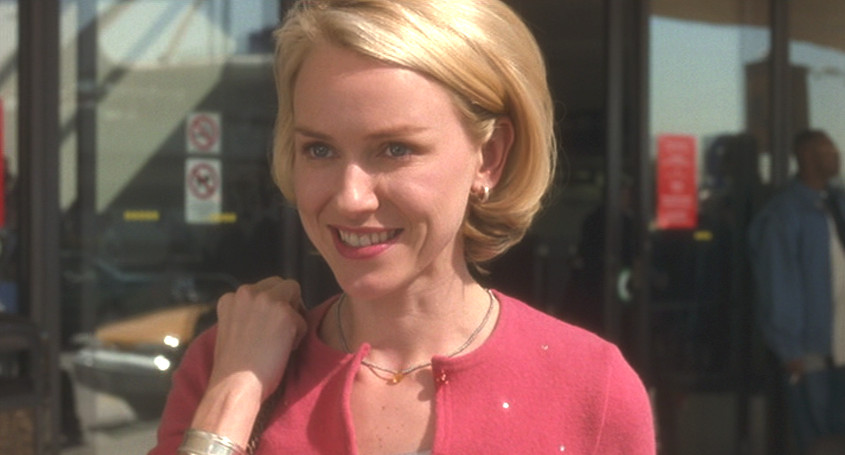
When people refer to Los Angeles, most of the time they refer to downtown L.A., a central urban area populated by skyscrapers. Los Angeles County, on the other hand, is the 4,083 square mile region in Southern California which incorporates 88 official cities and 76 unincorporated communities, making it one of the most diverse areas in the world.
Areas such as the San Fernando Valley, South Central, Hollywood, Malibu, and Pasadena all fall under the blanket of Los Angeles County. As disparate as all these communities may be, Angelinos share many commonalities: the complex and often overcrowded freeway system, smog, constant construction, dry desert weather, and a thriving car culture, to name a few.
Los Angeles is also home to Hollywood, one of the biggest filmmaking capitals in the world. People from all over the world flock to L.A. with the hopes of “making it” in the movie industry. However, not all films shot in L.A. truly depict what it’s like to live in L.A.
The following films not only take place in the city of dreams, but offer some sort of commentary or history about life within this expansive, crime filled, smog-ridden, movie making desert city by the beach.
1. Sunset Boulevard (Billy Wilder, 1950)
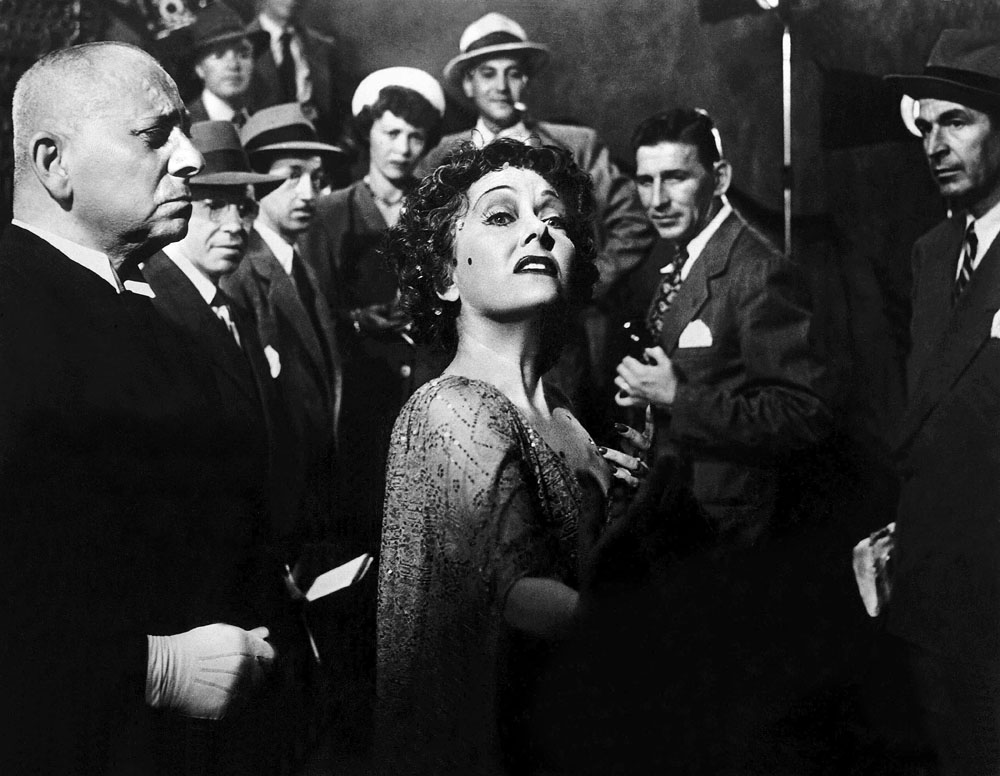
Billy Wilder’s classic film dramatically depicts the tragic lives of the artists Hollywood has rejected. Set in Hollywood, where the movie industry is of central concern for the characters, the film highlights the characters’ desire to work within a business that doesn’t have room for them.
A struggling screenwriter, Joe Gillis (William Holden), labors away at screenplays that aren’t selling. With rent on his studio apartment behind by three months and his car threatened of getting repossessed, he is desperately in need of a job. He stumbles into the driveway of an enormous dilapidated mansion on Sunset Boulevard, home to aging glamor queen of the 1920s, Norma Desmond (Gloria Swanson), and her live-in servant Max (Erich von Stroheim).
Upon discovering Gillis is a writer, Norma takes him on as a ghost writer to her epic “come-back” film story idea. Gillis becomes prisoner to the lonely and delusional Norma, who cannot come to terms with her faded celebrity.
Both characters have been cast out of the Hollywood industry: Norma because of her age and her inability to keep up with the changes of modern Hollywood; Gillis because his story ideas don’t seem to adhere to the unstable demands of Hollywood’s production companies.
This film’s focus is Hollywood and ways in which artists are affected by the superficial and changeable nature of the movie business. Artists like Norma or Joe Gillis crumble in this place that values novelty and youth.
2. Rebel Without a Cause (Nicholas Ray, 1955)
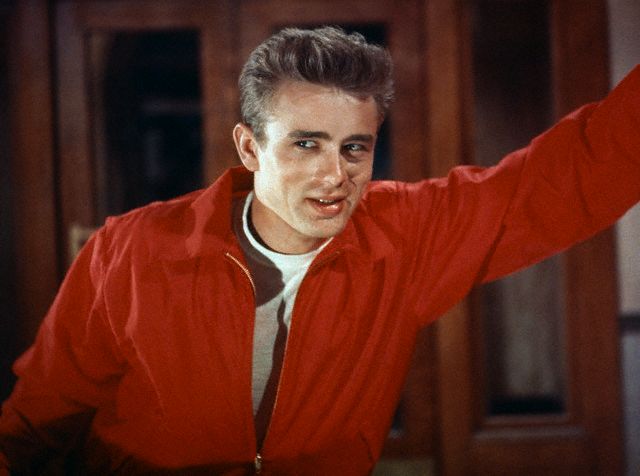
This innovative film is recognized as one of the first mainstream movies to depict teenage angst. Set in the Los Angeles suburbs, Ray’s sensitive story depicts three middle-class teenagers and their chaotic emotional turmoil.
A teenage misfit, Jim Stark (James Dean), is new to a suburban L.A. town. He is brought into the local police station for being drunk and disorderly while his parents are out at a party. Upset at his parents’ constant arguing as well as the feeling that his father is being emasculated by his mother, Jim has no one to connect with. He meets Judy (Natalie Wood) and Plato (Sal Mineo), both also frustrated and upset at their unaffectionate and absent parents.
The three become confidants after a teenage punk is killed racing Jim to the edge of a bluff in a game of “chicken.” On the run from a group of punks who believe Jim snitched to the police, the three friends hide out in an abandoned mansion in the Hollywood hills.
Unlike many films made during the 50s, this film ventures out of the studio. We see authentic locations in Los Angeles. L.A.’s Griffith Observatory, overlooking the L.A. grid, is featured twice in the film as an important spot for the three friends.
The exteriors of the high school that Jim, Judy, and Plato attend is Santa Monica High School, the real life alumni of which include: Charlie Sheen, Sean Penn, and Robert Downey, Jr. Interestingly, the abandoned mansion where the friends hide out is the Getty Mansion, a property once owned by oil-tycoon and art collector J. Paul Getty, and where Sunset Boulevard was also shot.
As well as featuring recognizable sites around L.A., the film also shows the suburban neighborhoods with white picket fences to illustrate the sunny veneer beneath which these teenagers are facing their emotional anguish.
3. The Exiles (Kent Mackenzie, 1961)
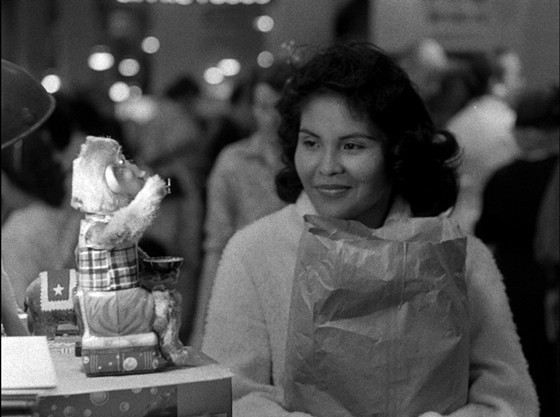
Kent Mackenzie’s film offers a rare glimpse into the lives of Native Americans living in the historic Bunker Hill district during the early 1960s. Shot with documentary-style realism, the film examines the everyday lives of Native American friends within the bustling city of downtown L.A.
The film follows a group of Native American friends, playing themselves, as they wander the streets of downtown Los Angeles one night, drinking and socializing. Mackenzie mixes unscripted voice-over interviews with improvised scenes of the friends hanging out at bars and dancing on “Hill X,” overlooking the city.
The Bunker Hill district in downtown L.A. was originally designed with Victorian style houses in the mid-19th century as a neighborhood for the well-to-do.
In the face of urban growth, wealthier residents began leaving, in lieu of the suburbs of Pasadena or the Westside. In post-war years, Bunker Hill became a slum area, housing people in poverty- like L.A.’s Native American and Latino population. Today the neighborhood is home to high-rises and cultural spaces, such as the MOCA, the Broad Art Museum, and Walt Disney Concert Hall.
This film expertly mixes pseud-documentary social commentary with modern realist filmmaking, discussing the displacement of Native Americans from their indigenous lands, as well as addressing the ambitions of the poverty-stricken youth hoping for better lives for themselves in Los Angeles.
4. The Long Goodbye (Robert Altman, 1973)
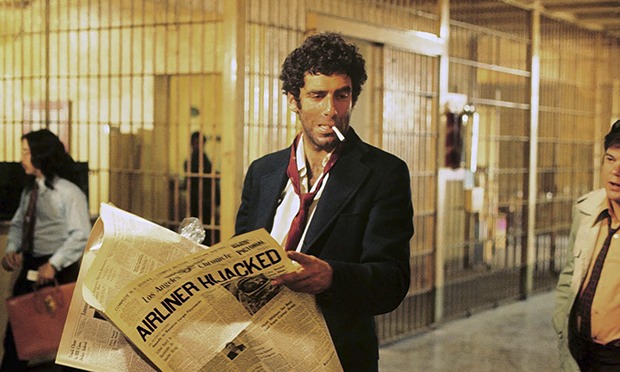
Altman’s version of the 1953 Raymond Chandler novel sets Philip Marlowe in 1970s Los Angeles. Although the story deviates from the book, the film provides a fantastic, somewhat comic re-interpretation of the hardboiled detective genre. Altman establishes the classic private investigator character in Los Angeles’ scenic, modern setting, updating and satirizing the genre at the same time.
Philip Marlowe (Elliott Gould) is feeding his fussy cat when his old friend Terry Lennox (played by baseball player Jim Bouton) asks for a ride to Tijuana. Marlowe agrees. Upon his return, Marlowe is confronted by two police detectives asking about the whereabouts of Lennox, accused of murdering his wife, Sylvia Lennox.
Refusing to provide any information, Marlowe is jailed by the police for three days. He learns soon thereafter that Lennox apparently committed suicide in Mexico, which provide the police with a satisfactory completion of their case. They quickly free Marlowe. However, Marlowe is suspicious of this news and starts investigating, soon becoming entangled in a larger scheme.
This “neo-noir” crime film places a suited, chain-smoking 1950s-eque private investigator within the relaxed, hippie-filled L.A. of the 1970s.
Elements of the city’s modernity are everywhere: Marlowe’s apartment in the Hollywood hills is full of stoner, hippie neighbors; Marlowe is asked to search for Roger Wade (Sterling Hayden), alcoholic writer, whom he discovers at a private detox clinic (Detox clinic? Did someone say L.A.?); Marlowe’s catch phrase, “It’s okay with me,” typifying his relaxed yet sardonic attitude.
The classic detective genre is satirized by Altman’s film, which immerses the loyal Philip Marlowe in Los Angeles’ decadence of the 1970s.
5. Chinatown (Roman Polanski, 1974)
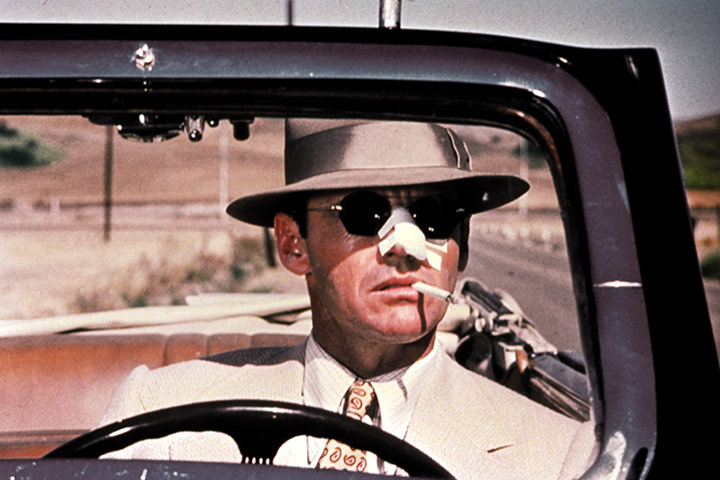
Polanski’s classic film, consistently ranked as one of the best films ever made, tells the story of private investigator, Jake Gittes (Jack Nicholson), who becomes caught in a whirlwind mystery of corruption and murder as he investigates the actions and then death of Hollis Mulwray, chief engineer for L.A.’s Department of Water and Power.
Gittes is approached by a woman who identifies herself as Mrs. Mulwray, who hires him to investigate her husband. A scandal breaks out when he takes photos of Mr. Mulwray in the arms of another woman.
The real Mrs. Mulwray (Faye Dunaway) confronts Gittes, explaining that he was tricked. Soon thereafter, Mr. Mulwray ends up dead by drowning in an apparent murder. Gittes quickly begins to uncover the sordid facts of Los Angeles’ stolen water supply, as well as the dirty details of Mrs. Mulwray’s personal life.
The film is based on true Los Angeles history in regards to the misconduct of Southern California’s water supply, led by civil engineer William Mulholland. In the early 1910-1920s, large amounts of water was diverted from the Owens Valley into Los Angeles in an effort to expand L.A.’s population. This caused a major drought and agricultural problem in the Owen’s Valley, resulting in a violent conflict between local famers and L.A. water officials.
A neo-noir, this film portrays Los Angeles as a dark place filled with shady dealings. It is a place where corruption thrives and informed people are virtually powerless to stop it.
6. The Decline of Western Civilization (Penelope Spheeris, 1981)
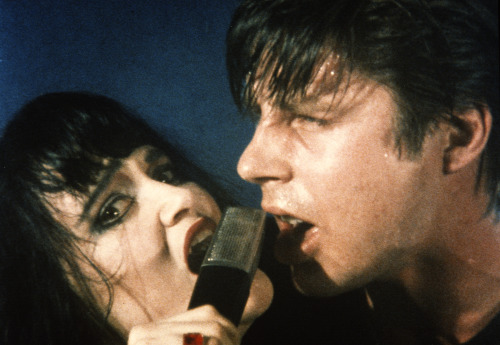
Penelope Spheeris’ rockumentary documents the L.A. punk scene during the late 1970s and early 1980s. The film mixes concert footage from a variety of punk bands (such as X, Black Flag, Circle Jerks, and Fear) with interviews with the bands, club owners, record owners, and locals analyzing the punk scene.
This film is the first part of a trilogy of documentaries examining the emergence of various rock music coming from Los Angeles in the 1980s through 1990s. It acts as a time capsule of the budding hardcore punk scene in Los Angeles as it records the wild performers and audience members. During the time, hardcore punk did not receive much coverage in magazines or on the radio, perhaps due to its controversial, rebellious content.
This makes the film all the more valuable, since it captures the raw moments on stage and in the mosh pit, which were not widely seen in film before this time. It attempts to understand the nature of punk music and the punk lifestyle that manifested during this period in Southern California.
7. Blade Runner (Ridley Scott, 1982)
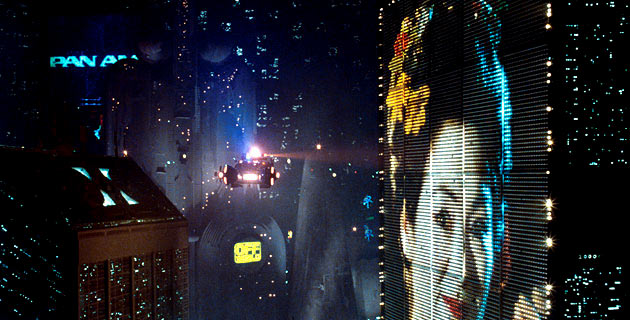
This neo-noir, set in 2019, captures a gritty, dystopian side of L.A. With this futuristic action thriller, Ridley Scott envisions what Los Angeles may become in the no-so-distant future.
The story occurs during a time when bioidentical artificial intelligence, called “replicants,” are being put to use on off-planet colonies. Replicants are banned from coming to Earth, but a handful have escaped and are hiding out in L.A.– possibly to contact their powerful manufacturer, the Tyrell Corporation, and attempt to extend their four year lifespan. Ex-police agent and “Blade Runner” Rick Deckard (Harrison Ford) is given the job to track down and “retire” the replicants.
The production design, lighting, and cinematography is highly stylized in this film, and all come together nicely to give Los Angeles a sleek, yet decaying feel. The L.A. skyline is crowded with neon signs, smoke stacks, and giant skyscrapers, making it feel as though the characters are living within an industrial wasteland.
There are remnants of the old fashioned, Art Deco-esque architecture authentic to Los Angeles, which in the film seems to be crumbling beneath the high tech expansion in this futuristic city. Smoke and shadows mysteriously engulf the characters in this world where human and robot are indistinguishable.
8. Repo Man (Alex Cox, 1984)
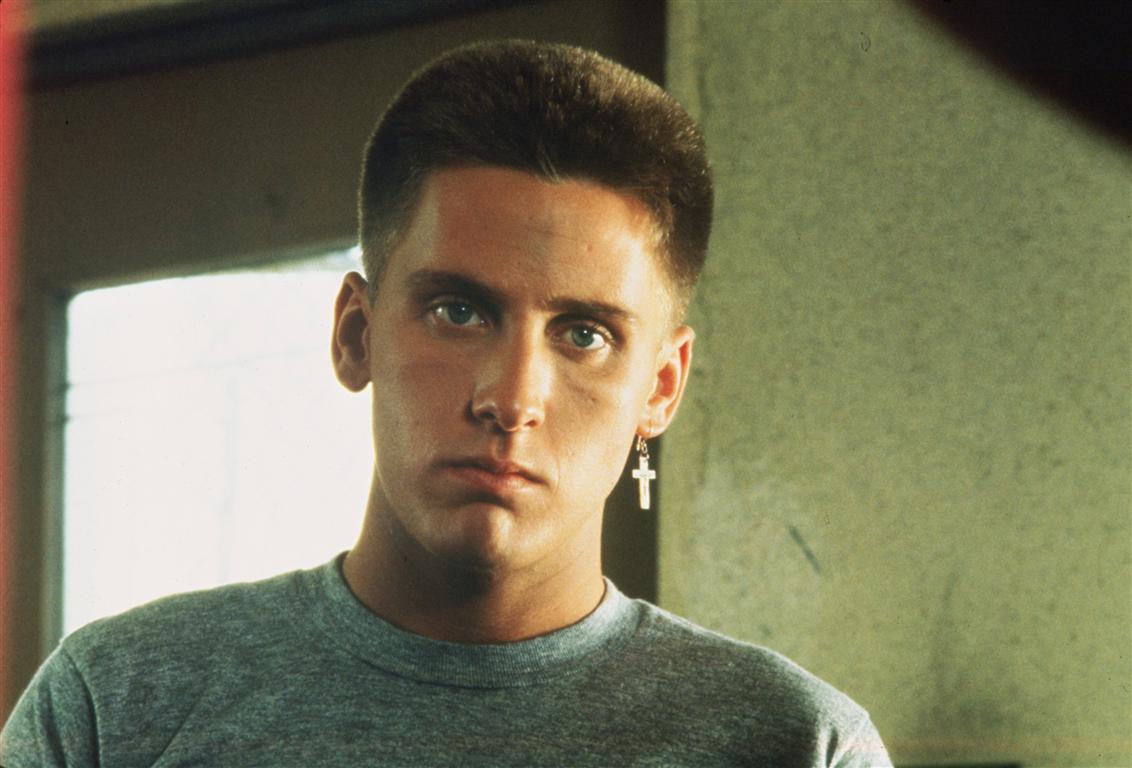
This bizarre cult film uses the landscape of downtown Los Angeles as the framework of the film’s unusual story. One part sci-fi, one part action, one part dark comedy, Repo Man utilizes downtown L.A.’s concrete jungle as the backdrop to the film’s rough, delinquent characters.
Emilo Estevez plays Otto, a young punk feeling his way through the world, looking for sex, work, and purpose. He becomes involved with a kooky group of Repo men, led by Bud (Harry Dean Stanton), who take Otto under their collective wing. Meanwhile, government agents seek a mysterious Chevy Malibu, apparently carrying radioactive alien material. The film erupts into chaotic absurdity when the repo agency confronts the government, a rival repo group, and the radioactive Malibu worth $20,000.
Robby Müller’s fantastic cinematography frequently makes use of long shots, placing the characters within the landscape of L.A. Barren concrete streets, telephone poles, highway bridges, and neon lights surround the characters at all times.
Müller shoots half of the film with the characters inside their stolen or repossessed cars, creating the appropriate atmosphere of L.A.’s vagabond car culture. Although the film’s story is eccentric and sometimes uneven, the depiction of Los Angeles’ raw 1980s punk scene feels no less authentic.